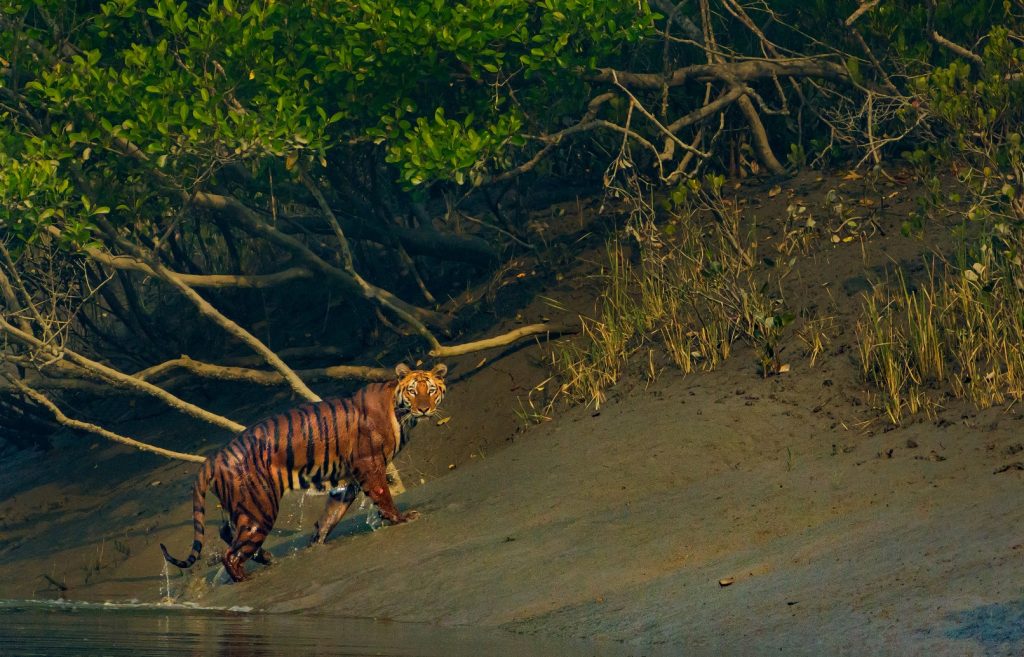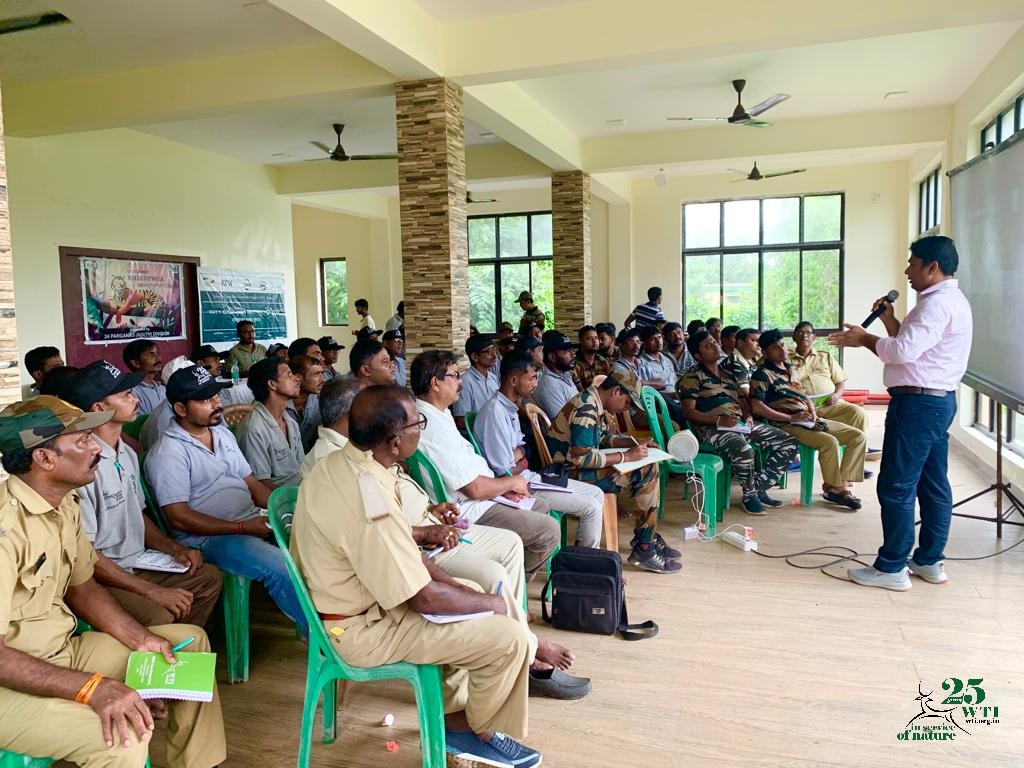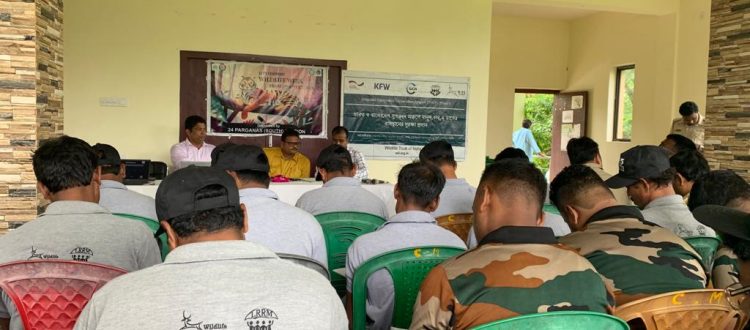Conflict mitigation training in Sundarbans by WTI & forest department during Wildlife Week
West Bengal, 5th October 2023- Human-Wildlife Conflict (HWC) is a significant concern in numerous regions where humans and wildlife populations share space. This challenge is escalating globally due to growing human populations encroaching upon wildlife habitats. Consequently, such conflict can be severe for both humans and wildlife encompassing accidents, fatalities, and financial losses.
In the Sundarbans, human-wildlife conflict involving encounters with tigers and crocodiles poses a major challenge. The region is densely populated, with over 4 million people living in the Indian Sundarbans alone. This close proximity between human settlements and wildlife habitats frequently results in conflict, as both groups compete for resources and space. As per the human-wildlife conflict (HWC) survey report conducted by WTI in 2019, we’ve recorded 1250 human-tiger conflict cases, 150 human-crocodile cases and 77 human-shark conflict cases (between 80’s- 2019). These statistics show the depth of HWC in this landscape.

Human-tiger conflict has escalated in Sundarbans over the years | Photo by Satyaki Naha
In order to handle this issue effectively, it is crucial to provide local villagers and members of the Forest Department with the knowledge and abilities required to reduce disputes and promote peaceful coexistence. The local communities and staff of the Forest Department play a crucial role in managing HWC, especially since local communities often reside close to forested areas and are, therefore, at a higher risk of experiencing conflicts. Continuous efforts from the government as well as from various wildlife conservation NGOs have resulted in increased tolerance of tigers among local communities.
During the National Wildlife Week celebrations, the WTI team collaborated with the Forest Department to host a training programme at the Sundarban Wild Animal Park in Jharkhali, West Bengal. More than 80 participants from eight Forest Ranges of 24 Pargana (South) Division including WTI’s Primary Response Team (PRT) members attended the training programme. Mr. Milan Kanti Mandol, DFO and Mr. Chinmoy Barman, ADFO, 24 Pargana (South) Division werein attendance along with Mr. Sanatan Deka, Project Head of Greater Manas Recovery Project of WTI.

The session was attended by 80 forest officers and PRT members | Photo by WTI
The session covered several aspects such as identifying root causes and impacts of HWC, strategies for prevention and mitigation, response and management strategies, and long-term conflict management approaches catering to the Sundarbans landscape. Additionally, group activities like causal mapping were conducted to identify the underlying causes and driving factors of HWC in the landscape, as well as to identify stakeholders and analyse their roles. Such training goes a long way to in ensuring enhanced capability to address and reduce HWC incidents, decreased possibility of human and animal injuries, increase cooperation and trust with the community, and more effective wildlife and habitat preservation.
WTI’s Sundarban Tiger Project is actively working in the Kultali region under 24 Parganas (South) Division Forest to reduce human-tiger conflict (HTC) under the IUCN’s Integrated Tiger Habitat Conservation Program (ITHCP)-Phase-II. Efforts are being made to implement tech-driven solutions to ensuring a safer and more harmonious coexistence between humans and wildlife. To know more, read here.









